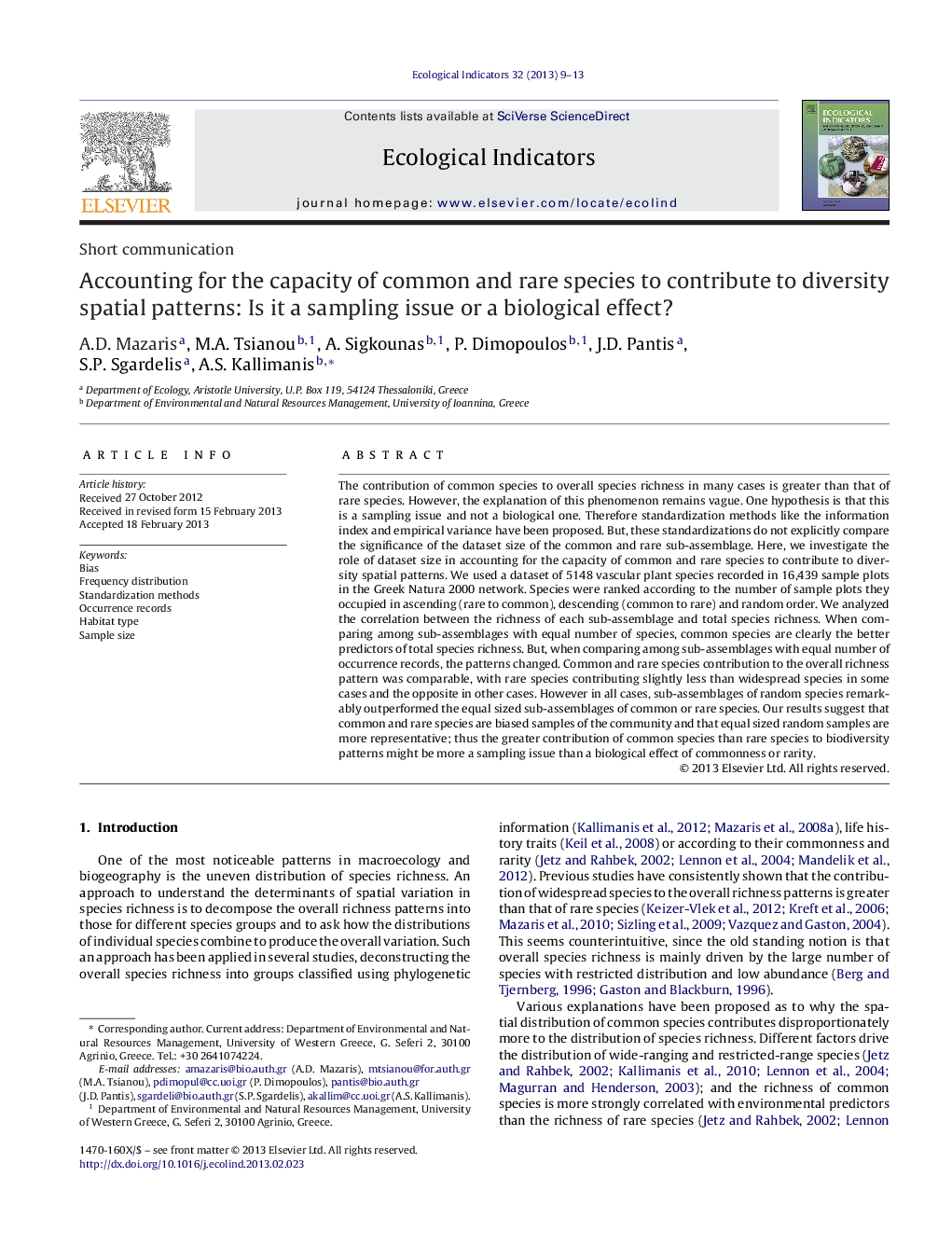| Article ID | Journal | Published Year | Pages | File Type |
|---|---|---|---|---|
| 4373380 | Ecological Indicators | 2013 | 5 Pages |
The contribution of common species to overall species richness in many cases is greater than that of rare species. However, the explanation of this phenomenon remains vague. One hypothesis is that this is a sampling issue and not a biological one. Therefore standardization methods like the information index and empirical variance have been proposed. But, these standardizations do not explicitly compare the significance of the dataset size of the common and rare sub-assemblage. Here, we investigate the role of dataset size in accounting for the capacity of common and rare species to contribute to diversity spatial patterns. We used a dataset of 5148 vascular plant species recorded in 16,439 sample plots in the Greek Natura 2000 network. Species were ranked according to the number of sample plots they occupied in ascending (rare to common), descending (common to rare) and random order. We analyzed the correlation between the richness of each sub-assemblage and total species richness. When comparing among sub-assemblages with equal number of species, common species are clearly the better predictors of total species richness. But, when comparing among sub-assemblages with equal number of occurrence records, the patterns changed. Common and rare species contribution to the overall richness pattern was comparable, with rare species contributing slightly less than widespread species in some cases and the opposite in other cases. However in all cases, sub-assemblages of random species remarkably outperformed the equal sized sub-assemblages of common or rare species. Our results suggest that common and rare species are biased samples of the community and that equal sized random samples are more representative; thus the greater contribution of common species than rare species to biodiversity patterns might be more a sampling issue than a biological effect of commonness or rarity.
▸ A standardization method based on the number of occurrence records is proposed. ▸ Rare species contribute slightly less to richness pattern than common species. ▸ Random species outperform common and rare species in similar sized sub-assemblages.
